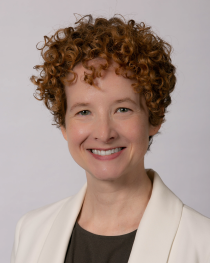The health care workforce shortage continues to be a top concern for state policymakers. While increasing wages and creating safe working environments in health settings remain key to building the health care workforce, many other policy levers — such as building a workforce that matches states’ demographics, addressing pipeline challenges and developing clear pathways for individuals to access health professional education — can strengthen the development and retention of a qualified, adequate health workforce. Multiple state agencies can coordinate and play a role in this approach.
This blog post explores steps taken by New York to address the state’s health care workforce needs, offering insights for state health policy leaders engaged in health care workforce planning. Through a thoughtful planning process, New York has built and funded a comprehensive plan focused on direct care workers, nurses, physicians, and other providers. Funded initiatives include identifying overall outcomes and goals based on strategies such as increasing wages for homecare workers, funding pre-medical opportunities to expand the academic pipeline and expanding financial incentives for physicians and nurses. Below is a summary of New York’s 2023 budget that details all of these investments.
New York officials also recognize a need for state government to act as a coordinating entity that can amplify a diverse array of health care workforce strategies. For example, as licensure, education, and health administration are overseen by different state agencies, New York has created its Center for Workforce Innovation to maximize and align workforce initiatives in key priority areas such as the direct care workforce, mental health practitioners, and clinical staff.
Related Blogs: State Strategies to Address Workforce Challenges
Health Workforce Investments in 2023 New York State Budget
New York’s fiscal year (FY) 2023 enacted budget contains several multi-year investments in the health care workforce, including wage increases, provider incentives, a comprehensive mental health care plan, Medicaid strategy, and a centralized approach to health care workforce development. The state expands programs focused on recruiting pre-medical students, increasing the number of direct support professionals to serve people with disabilities, covering education costs, and supporting training opportunities at state institutions.
Strengthening the Clinical Workforce
$1 Million Pre-Medical Opportunity Program
The Pre-medical Opportunity Program empowers well-qualified students from underserved communities to enter — and successfully complete — medical school and/or doctoral programs in the medical sciences. The program provides academic support, mentoring, clinical exposure, shadowing and research opportunities, workshops, financial assistance, and application guidance to students who have demonstrated potential to succeed in careers in medicine.
$47 Million Financial Burden Relief for Health Care Workers
The state will provide direct financial support for the education of health care professionals, provided that they work in New York state for a specified period after obtaining their credentials. The plan will offer free tuition, cover instructional costs for high-demand health occupations, and provide stipends to make up for lost income while in school. It will also provide for wraparound services such as child care and transportation support to eliminate obstacles that make it difficult for New Yorkers to obtain training required for health care professions.
Provider Incentives
The 2023 New York budget includes health care worker bonuses for doctors, residents, and nurses among other direct support staff making less than $125,000 a year and working at least 20 hours a week. Specifically, an investment of $1.4 billion includes:
- Investing an additional $6.8 million in FY 2023 and $5.1 million annually thereafter in the Doctors Across New York program, which provides loan forgiveness for doctors who work in underserved areas over three years.
- Creating a Nurses Across New York program, which invests $2.5 million in FY 2023 and $3 million annually starting in FY 2024 to promote, strengthen, and increase the number of nurses in underserved communities across the state by providing reimbursement for loan repayment for nurses working in underserved areas for three years.
Bolstering the Direct Care Workforce
Wage Increases
The plan also includes increasing the minimum wage for homecare workers by $3, phased in over two years, utilizing home- and community-based American Rescue Plan Act (ARPA) funding to invest $725 million in FY 2023 and $1.4 billion in FY 2024. The state will continue to support the wage increase once federal support is no longer available.
Medicaid Strategy for Direct Care Workers
The plan also includes supporting and strengthening the home- and community-based direct care workforce by investing over $2 billion of home- and community-based services enhanced FMAP, authorized by ARPA, on 12 workforce initiatives, including expanding training opportunities, providing performance incentives, and providing workforce transportation support.
$10 Million Partnership to Professionalize and Expand Direct Support Professionals
The New York State Office for People with Developmental Disabilities has entered into a $10 million partnership with the National Alliance for Direct Support Professionals to expand opportunities for professional credentialing for direct support professionals in the developmental disabilities field throughout New York. The three-year agreement will help professionalize the direct support workforce and address worker shortages.
$39 Million Caregiver Flexibility for Direct Care Workers
Long-term care workers often face barriers that prevent them from moving between caregiving roles, making it difficult for direct care workers to take new jobs and for care facilities to fill openings. This initiative will facilitate the creation of a model for training “universal” long-term care workers who want to move across caregiving roles, ensuring that long-term care providers experiencing workforce shortages can identify and deploy trained workers in a timely and efficient manner.
Mental Health Care Plan
New York launched a $1 billion mental health care plan, a multi-year effort that will provide funding for new residential units, increase inpatient capacity, and dramatically expand outpatient mental health services. In addition, there will be investments in peer-based outreach, an expansion of school-based mental health services, and the closing of gaps in insurance coverage for behavioral health services. The plan includes a 4 percent cost of living adjustment and an additional $5 million for the Office of Mental Health’s Community Mental Health Loan Repayment Program, expanding the eligibility for the program to include licensed mental health professionals.
Centralized Health Workforce Efforts
To better understand health workforce shortages and coordinate strategies, New York is establishing a centralized team that will work across efforts and agencies. For example, over 25 percent of the New York health workforce is over the age of 60, so workforce efforts are under considerations for inclusion in the state’s first Master Plan for Aging. Additionally, worker pipeline factors, licensure, and scope of practice fall under the authority of the state’s Department of Education, while regulatory and financial components are administered by the Department of Health. As coordination among these agencies is key, the state created a pair of centers to stretch across intergovernmental agencies:
- In the Department of Health, the New York State Workforce Innovation Center will further support long-term health workforce needs by investing $20 million annually.
- The New York State Office of Strategic Workforce Development will partner with existing agencies, regional universities, the Department of Labor, and regional development boards to grow a highly skilled workforce that meets the state’s needs. The office will have a team of 10.
$22.5 Million Training Capacity Expansion for Statewide Institutions
New York’s medical institutions often lack the training capacity to focus on preparing the next generation of health care professionals as they focus on delivering immediate care to New Yorkers. To support a steady pipeline of high-quality health care workers, the state will make investments to increase the training capacity of medical institutions. This initiative will identify and fund a range of projects to advance this goal, which may include establishing new training programs, developing innovative training approaches and techniques, and providing compensation for workers to train full-time support staff, and in doing so, expand overall training capacity.
Key Takeaways
Health care workforce challenges are complex, resulting from systemic issues that involve education, labor, insurance, health, and social service agencies. States’ efforts to expand the workforce can be accelerated with strong executive leadership, legislative support, and interagency coordination, specifically by developing a staffed approach that focuses on coordination and outcomes.
Acknowledgements
The author would like to thank Cheryl Dallesandro, Eugene Heslin, Karen Madden, and Carrie Roseamelia for their contributions to this publication. This work was supported by the Health Resources and Services Administration (HRSA) of the U.S. Department of Health and Human Services (HHS) as part of a financial assistance award under the National Organizations of State and Local Officials (NOSLO) cooperative agreement totaling $836,859.00. The contents are those of the author(s) and do not necessarily represent the official views of, nor are an endorsement by, HRSA, HHS, or the U.S. government. For more information, please visit www.HRSA.gov.



